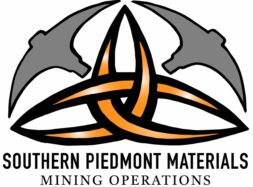Our mine development process is rigidly structured to ensure that our evaluation of a project determines its true value and how it can be profitably operated. The process involves ore analysis, technology review, plant design, and operational plans.
Exploration and Ore Analysis
The first step in determining whether a property is worth developing is analyzing and quantifying the amount of precious metals contained in the ore. Our team employs a portable XRF Analyzer to assess and gather field samples during the exploration phase. We use a GPS unit to mark the exact location of each sample. These field samples are then taken back to the laboratory for more in depth study. There are two primary assay types we employ based on the ore characteristics, standard fire assays, and sophisticated assays. These sophisticated assays involve special pre-treatments to see the total amount of precious metals in a sample. A detailed explanation on assays is found in our Learning Center.
Assay Value of the Project
Once we have completed the studies of the samples we calculate the average value per ton of the ore. Then using the GPS location data and calculating in the depth of the samples, we are able to estimate the total tonnage available to mine, called the mapped reserves. Using the average value per ton together with the volume estimation of ore available gives us the Assay Value of the project. Locating the assay value of a mapped reserve is an important part of developing a gold mining project, but is not the true value of the ore, but is target to strive for. The market value of a mapped reserve is the project’s extraction value, explained in detail in our Learning Center. The extraction value is the recoverable value of precious metals assay values using available processes, methods and technology.
Water Analysis
We routinely test the surface and subsurface water for the presence of gold while studying the ore. It is a well-known fact that oceans, creeks, and rivers have gold in them and mostly at low concentrations measured in PPT. However, the closer the flowing water is to the gold source the higher the concentrations become. When measuring the gold in a water sample, values are normally parts per trillion or parts per billion. If values are reported in parts per million that indicates that there may be a natural leach heap occurring, and may provide supplemental recovery to a project.
Extraction Evaluation
The next step is to determine what technology will be required to recover the precious metals based on the ore characterization. The characterization determines the methods applied, using a combination of equipment and processes to recover free gold, complex gold, and micro gold. Some of the processes and hardware employed are proprietary, and they are customized and optimized for each project. We evaluate off-the-shelf and proprietary technology to determine the plant equipment required and the sequenced steps that provide the best system for recovery. 1027 owns a proprietary recovery system, named ETA, and a proprietary circuit, named MX-70, that when combined can greatly enhance the recovery of gold. The recovery increase can be from 1.5 times to 15 times what a standard processing plant can recover because of addition of the recovery of micro-gold.
Extraction Value of the Project
This Extraction Value of a project is determined by the combination of the findings from the ore characterization, assays, water analysis, and extraction studies. This combination determines what percentages of the Assay Value that can be economically extracted in an environmentally safe manner. The recovery value of the ore is analyzed against the production and operating cost estimates and the project is either moved forward to the next stage or is put on hold until further technological advances become available.
Pilot Plant Study
If the Extraction Value is promising, we proceed to test our laboratory findings in a small 1 ton per hour Pilot Plant. This process proves the validity of the Extraction Value and allows the team to dial in the processes and systems to optimize the economical recovery of precious metals on the project. If the tests prove the values can be recovered profitably, then this information will be used to design a full-scale Processing Plant.
Mine Operating Plan
The last step in mine development, is the Mine Operating Plan (MOP). This is the master plan and contains all of the information and component plans needed to put a mine into production, including the Business Plan with a detailed project budget and a step-by-step path forward. It includes all of the legal reviews and rights to the project, and required permits. It becomes the blueprint for a total turn-key mining operation. The bottom line is at this stage, all the risk has been reduced virtually to performance risk only, and the MOP becomes the strongest proof of the mine’s value.
